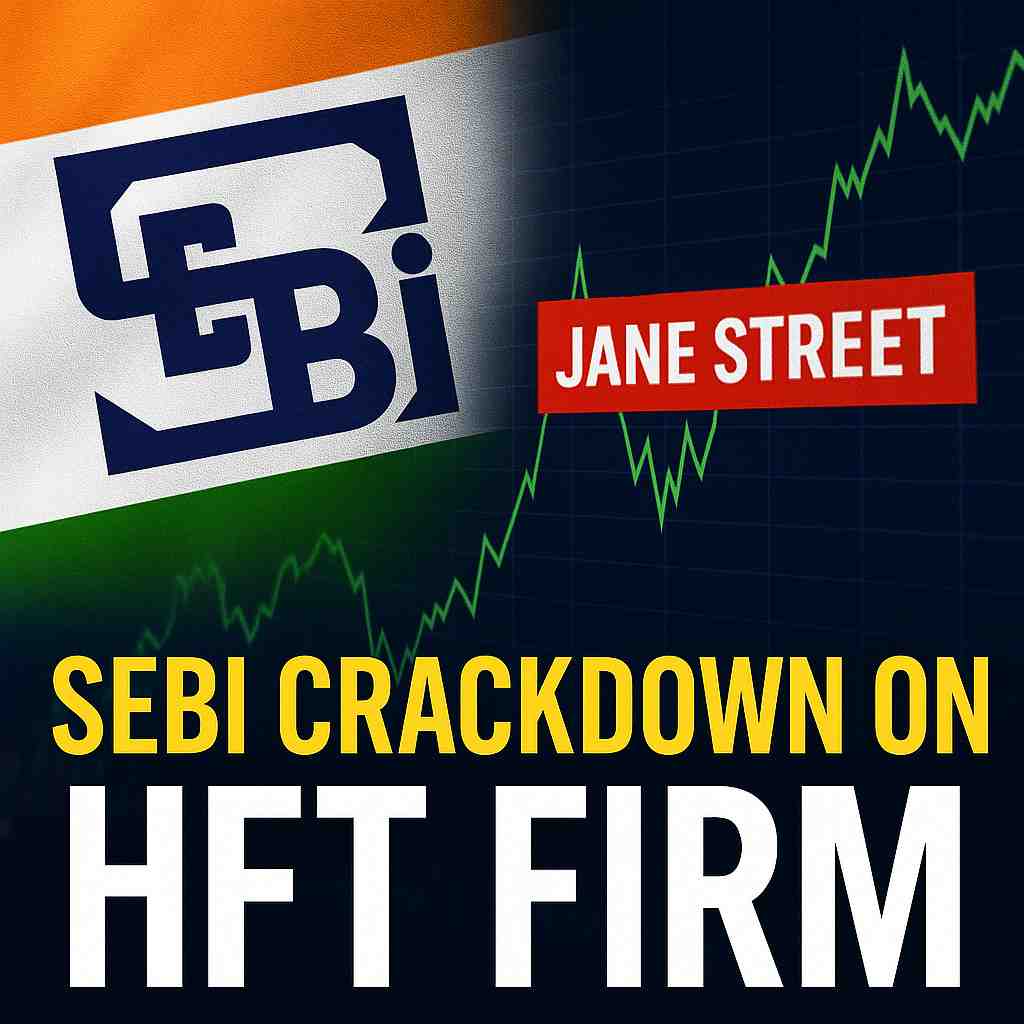-
Algos
-
Stocks
-
Trading
-
Strategies & Arbitrages
-
Mutual Funds

A tremor has hit the high-stakes world of algorithmic trading in India. On July 3, 2025, the Securities and Exchange Board of India (SEBI) dropped a bombshell: an aggressive interim order against Jane Street, a sophisticated and secretive US-based trading giant.
The order, which seeks to impound a staggering ₹4,843 crore (over $580 million) in alleged illegal gains, has done more than just target one firm. It has sent a powerful shockwave across Dalal Street and back to Wall Street, forcing a nervous, industry-wide re-evaluation of a popular trading structure used by some of the world's biggest players.
This isn't just another regulatory slap on the wrist. It's a fundamental challenge to the very architecture that many global high-frequency trading (HFT) firms have used to operate in India's lucrative markets. Let's break down what happened and why it matters so much.
To understand SEBI's move, you first need to understand the clever, and allegedly illegal, playbook at the heart of this case. Global trading firms have long been attracted to India, especially its booming derivatives market, which is one of the largest in the world by volume. However, navigating India's regulatory landscape comes with specific rules.
The Players:
The Foreign Portfolio Investor (FPI): This is the standard route for overseas firms to invest in India. It offers certain tax advantages, particularly in the Futures & Options (F\&O) segment. However, the FPI route comes with significant restrictions. Critically, as outlined in SEBI's FPI Regulations, FPIs are generally prohibited from engaging in intraday trading in the cash market (buying and selling stocks within the same day) and face certain curbs on their derivatives positions.
The Domestic Indian Entity: To get around these restrictions, many global firms establish a separate, fully-registered company in India. This domestic arm can trade more freely, like any local player, but its profits are subject to higher Indian taxes.
The "dual-entity" model involves using both of these entities simultaneously. And according to SEBI, this is where Jane Street crossed a critical line.
SEBI's investigation focused on Jane Street's two arms: its offshore FPI and its Indian entity, JSI Investments Pvt Ltd. The regulator alleges that these were not two independent players but two puppets controlled by a single master. You can typically find such rulings on the SEBI Interim Orders and Notices page.
Here’s the alleged scheme:
SEBI’s interim order stated bluntly that the structure "enabled the JS Group to work around the regulatory prohibition... and thereby execute the manipulative scheme without specifically flouting the FPI Regulations."
The Jane Street case isn’t happening in a vacuum. The article mentions that other HFT heavyweights like Citadel Securities, IMC Financial Markets, and Jump Trading are known to operate with similar dual-entity structures in India.
Until now, this model was widely seen as a grey area—a clever but perhaps acceptable way to navigate regulatory complexities and tax arbitrage. But SEBI's order has redrawn the lines in the sand. The regulator has signaled that it won't just look at whether a specific rule was broken on paper; it will look at the intent and the overall effect of a trading pattern.
This has left other firms uneasy. As one source noted, brokers will now have to urgently "rework their algorithms to ensure there’s no overlap or contradiction within the group." The fear is that what was once considered standard operating procedure could now be interpreted as market manipulation.
The crackdown on Jane Street is a definitive statement from India's market watchdog. SEBI is communicating to the world's most sophisticated trading firms that the days of exploiting regulatory ambiguity are over. The message is clear: India welcomes global capital, but it will not tolerate structures designed to game the system.
While the case will likely face a lengthy legal battle, the immediate impact is undeniable. Global firms are being forced to rethink their Indian trading architecture from the ground up. For now, the signal from SEBI is loud and clear: a new, stricter sheriff is in town, and everyone is expected to play by the spirit, not just the letter, of the law.

Monika Alcobev, a premium liquor importer, is launching its Rs 165.6-crore SME IPO on July 16. Get all the key details on the price band, issue size, and financials.

NSDL & CDSL add proxy advisor votes to e-Voting, helping retail investors make smarter decisions and boost governance.

The Indian rupee dipped to 85.70/USD as investors await U.S. jobs data and a looming trade deal deadline, yet near-term volatility expectations remain steady.

The Indian rupee edged down to 85.7025 against the dollar as traders wait for U.S. data and a July 9 tariff deadline. Despite the risks, near-term volatility metrics remain muted—here’s what it means for markets.

India attracts over $1.2 billion in foreign flows in two weeks, with ETFs like iShares MSCI India ETF dominating. Traditional long-only funds see outflows.

The National Stock Exchange is introducing monthly electricity futures to reduce price volatility in India’s power market.
